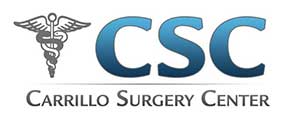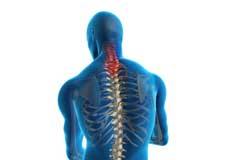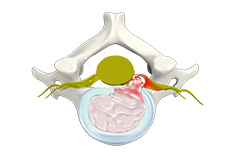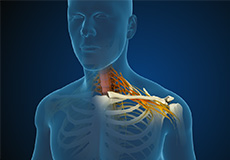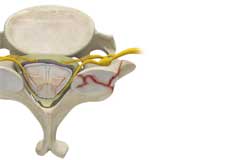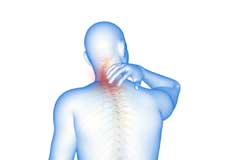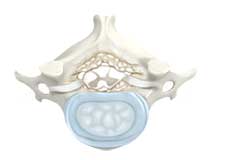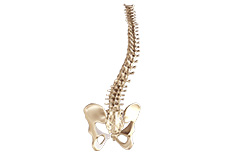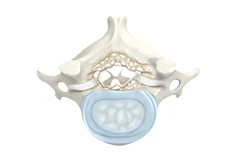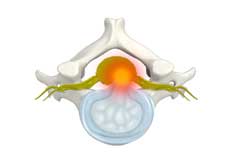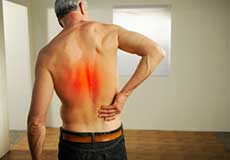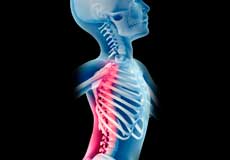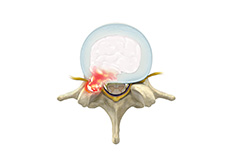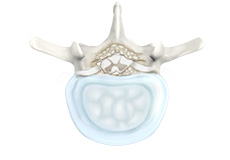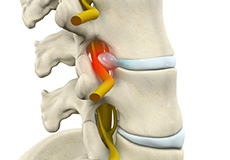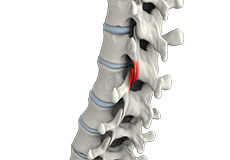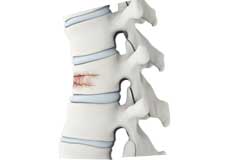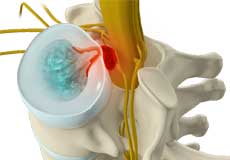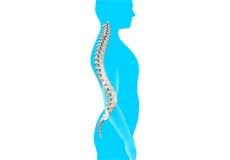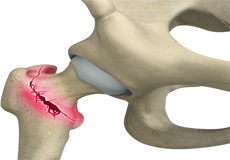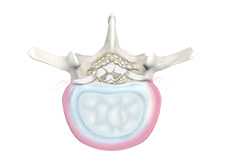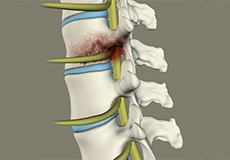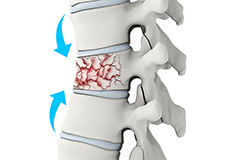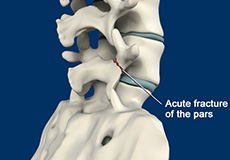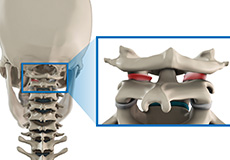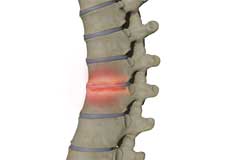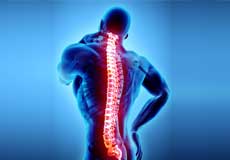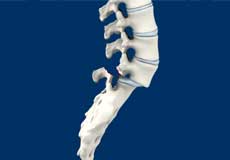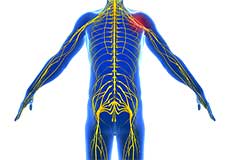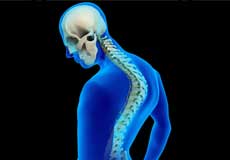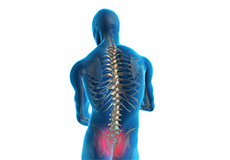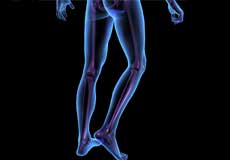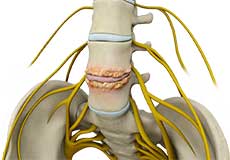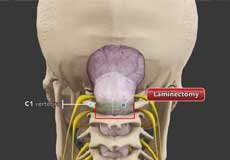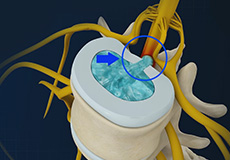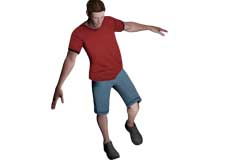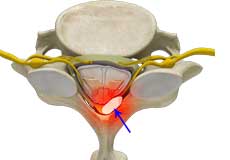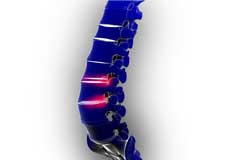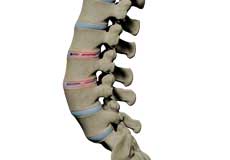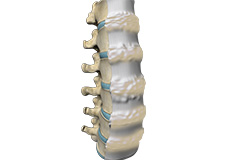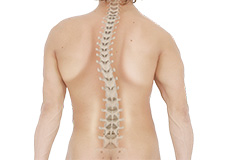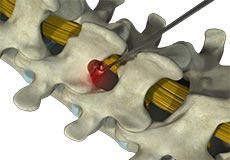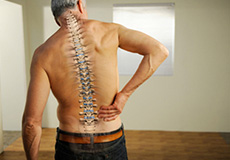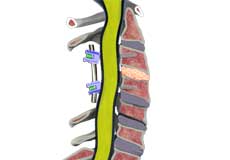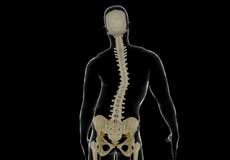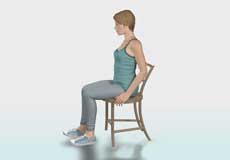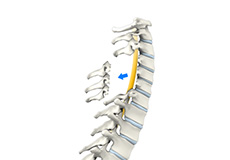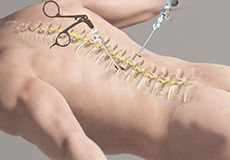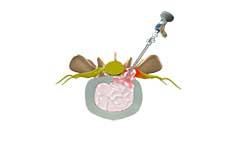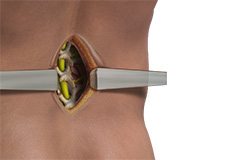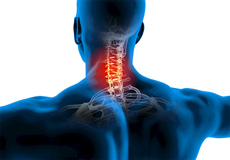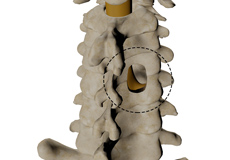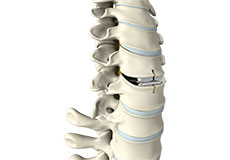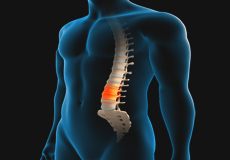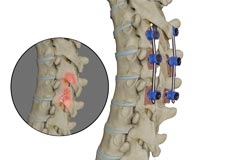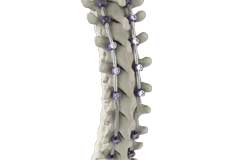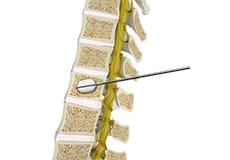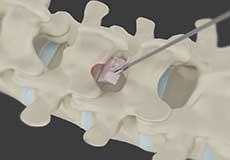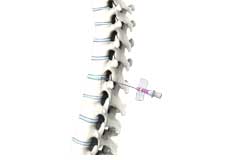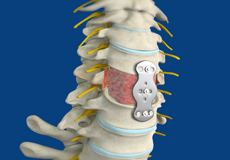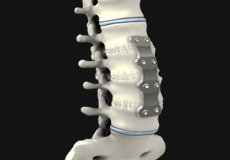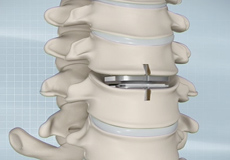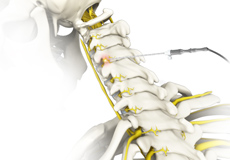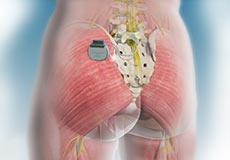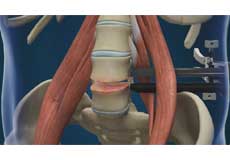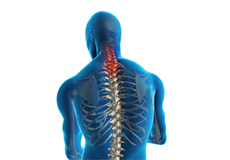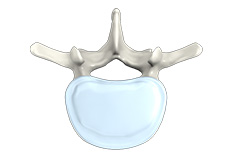Neck & Arms
Neck Pain
Common neck pain may occur from muscle strain or tension from everyday activities including poor posture, prolonged use of a computer and sleeping in an uncomfortable position.
Neck Strains and Sprains
The neck is the most flexible part of the spine and supports the weight of the head. The unique anatomical structure of the cervical vertebrae allows the free movement of the head. The neck is also composed of muscles and ligaments. Any excessive stress on the ligaments and muscles may injure or damage them.
Cervical Disc Herniation
Cervical disc herniation can arise due to aberrations of the intervertebral disc such as bulging, rupture, and slipped or extruded disc. It results in neck, shoulder, and arm pain. In some cases, a disc herniation may occur due to injury, repetitive movements, or degenerative disc disease (DDD).
Cervical Radiculopathy/Myelopathy
Disc protrusion, also called herniated disc, is a condition caused by a tear in an intervertebral disc, allowing the disc contents to bulge out.
Cervical Fracture
Cervical fractures are common in motor vehicle accidents, sports activities and falls. The second, sixth and seventh cervical vertebrae are frequently involved in fractures, which may injure the spinal cord.
Cervical Spondylosis
Cervical spondylosis, also called arthritis of the neck, is an age-related medical condition characterized by deterioration of spinal joints, vertebrae, discs, and ligaments in your neck.
Cervical Degenerative Disc Disease
Cervical degenerative disc disease (DDD) is a misnomer, as it is not a disease as such but a condition that affects the strength, resiliency and structural integrity of the intervertebral discs due to increasing age, trauma, injury, repetitive movement, improper posture, or poor body mechanics.
Cervical Deformities
The spine is made up of 33 small bones called vertebrae and is known as the spinal column or vertebral column. It can be divided into 5 parts: cervical, thoracic, lumbar, sacral, and coccyx region. The cervical spine is comprised of the first 7 vertebrae, which supports the neck and the head.
Cervical Stenosis
Cervical stenosis refers to the narrowing of the spinal canal that protects the spinal cord and its branching nerves.
Cervical Disc Protrusion
Cervical disc protrusion, commonly known as a disc bulge, occurs when the spinal discs and associated ligaments are intact, but may form an outpouching that presses on the spinal nerves.
Mid Back
Mid-back Pain
Mid-back pain is also called as thoracic pain or upper back pain. It occurs at the back of the chest and is much less common than lower back pain. It may occur due to poor posture, muscle strain, improper lifting and bending, physical inactivity, sports injury, a trauma in a car accident, cancer, or an autoimmune disease.
Back Pain in Children
Back pain is uncommon in children and is usually associated with a serious underlying condition or an injury. Often, the cause of back pain is non-specific and is thought to be due to musculoskeletal strain, poor posture, heavy school bags that are not worn correctly or underlying mood problems.
Lumbar Disc Herniation
Lumbar disc herniation is the most common cause of lower back pain and leg pain (sciatica). Aging, injury or trauma may cause the annulus fibrosus to tear, resulting in protrusion of the nucleus pulposus. This may compress the spinal nerves and/or spinal canal.
Lumbar Stenosis
Lumbar stenosis is the compression of spinal nerves caused by the narrowing of the spinal canal. It is one of the common causes of lower back pain. Spinal stenosis can also affect the spine in the neck region.
Lumbar Degenerative Disc Disease
Lumbar degenerative disc disease (DDD) is a common cause of lower back pain. Over time, these natural shock absorbers wear out and degenerate. Degenerative disc disease is not actually a disease but refers to the changes in the spine that occur as a part of the normal aging process.
Lumbar Radiculopathy
Back pain is a common condition affecting approximately 80% of the population at some point in their lives. The area usually affected is the lower back (lumbar region) as it bears most of the upper body’s weight. Trauma to the spine, age and overuse can result in deterioration of the vertebral bones and joints or bulging of the discs.
Lumbar Facet Joint Arthropathy
A joint is a place where two bones contact each other. Arthropathy means any disease of the joints. Lumbar facet joint arthropathy occurs when the facet joints degenerate or wear out over time due to aging or arthritis.
Lower Back & Legs
Sciatica
Sciatica is a painful condition caused by the irritation of the sciatic nerve. Sciatica can be acute (short term), lasting for a few weeks or chronic (long term), persisting for more than 3 months. It is important to understand that in most cases, sciatica will resolve itself within a few weeks or months and rarely causes permanent nerve damage.
Low Back Pain
Low back pain is often a common symptom of many disease conditions and the back pain may range from simple or dull pain to sudden and sharp pain. If the pain persists for a few days, it is acute pain whereas if it continues for more than 3 months, it is considered as chronic pain.
Vertebral Compression Fractures
Back pain is an indication of stress fractures known as vertebral compression fractures. Vertebral compression fractures occur when the normal vertebral body of the spine is squeezed or compressed. The bone collapses when too much pressure is placed on the vertebrae, resulting in pain, limited mobility, loss of height and spinal deformity.
Cauda Equina Syndrome
What Cauda equina syndrome is an emergency condition characterized by persistent severe lower back pain caused by the compression of a bundle of spinal nerves (cauda equina) at the end of the spinal cord (lower back and hip region).
Spinal Deformities
Scoliosis
Scoliosis is a condition characterized by the abnormal curvature of the spine that causes a deviation to one side. It causes a physical deformity, making the spine look like the letter “C” or “S” instead of the letter “I”. Scoliosis can affect either the mid or lower back. Scoliosis of the mid back is more common. Scoliosis can occur at any age.
Osteoporotic Fractures
Osteoporosis is a bone disorder where your bones become fragile and weak causing them to break easily. The condition occurs when your body starts losing bone or does not make enough bone or both, due to calcium deficiency.
Facet Joint Arthritis
Facet joints, also called zygapophyseal joints, are synovial joints located at the back of your spine, connecting the vertebrae together. Normally the facet joints are lined by a cartilage and a membrane of synovium. There are two joints between each pair of vertebrae located on either side of the spine. The facet joints provide stability for the spine.
Degenerative Disc Disease
Degenerative disc disease (DDD) refers to the gradual deterioration of the intervertebral discs between the vertebrae. DDD is a misnomer as it is not actually a disease but a condition that affects the strength, resilience and structural integrity of the intervertebral discs due to advancing age, trauma, injury, repetitive movement, improper posture or poor body mechanics.
Spinal Infection
A spinal infection is described as an infection of the spine. It can occur in various locations of the spine i.e., intervertebral disc space, vertebral column, spinal canal, and nearby soft tissues.
Spinal Fractures
Vertebral compression fractures occur when the normal vertebral body of the spine is squeezed or compressed. The bone collapses when too much pressure is placed on the vertebrae, resulting in pain, limited mobility, loss of height, and spinal deformities.
Spondylolysis
Spondylolysis is a stress fracture in the vertebra that may progress into spondylolisthesis, a condition where the vertebra gets displaced from the spinal column. Spondylolysis is the cause of frequent low back pain in children. It is more common among children and teenagers who participate actively in sports such as football, weightlifting, and gymnastics.
Spinal Instability
Spinal instability refers to the condition of failure of the spinal column to maintain its normal structure. Normally, the spine functions to protect and provide support to the body and its internal organs. An unstable spine is incapable of holding various spinal structures such as spinal muscles, ligaments, bones, and discs in place.
Spondylodiscitis
Spondylodiscitis is an infection of the intervertebral discs (between the vertebrae) along with the vertebrae (one of many small bones forming the spine). The condition is a primary infection of one or more intervertebral discs (discitis) with secondary infection of one or more vertebrae (spondylitis).
Spine Deformities
The spine or backbone provides stability to the upper part of our body. It helps to hold the body upright. It consists of a series of irregularly-shaped bones appearing in a straight line. The spine has two gentle curves, when viewed from the side and appears to be straight when viewed from the front.
Spondylolisthesis
Spondylolisthesis is the displacement of the vertebral disc from the spinal column. Outward (forward) displacement is termed as anterolisthesis and inward (backward) displacement is termed as retrolisthesis. This condition is often preceded by spondylolysis, a degenerative condition of the vertebra.
Spondyloarthropathies
Spondyloarthropathies are a group of chronic inflammatory diseases of the spine and joints. Spondyloarthropathies can occur at any age, however, they occur more often in young males.
Isthmic Spondylolisthesis
Isthmic spondylolisthesis is a spinal disorder in which one vertebra glides forward over the vertebra below. It usually affects the lumbar (lower back) spine, more frequently at L5-S1 levels (the fifth lumbar vertebra and first sacral vertebra).
Spine Trauma
Spine trauma is defined as an injury or damage to any region of the spine. The spine extends from the neck to the lower back and consists of the vertebral bones which surround and protect the spinal cord. Damage to the spinal cord or spinal nerves can cause changes in sensation, strength, and other body functions.
Peripheral Nerve Compression
The human body has 2 nervous systems, the central nervous system that includes the brain and spinal cord, and the peripheral nervous system that includes a network of nerves that lie outside the brain and spinal cord.
Spinal Stenosis
Spinal stenosis is a condition caused by the vertebral column constricting and exerting pressure on the spinal cord or neural foramen (a bony tunnel through which a nerve exits the spinal cord).
Degenerative Spinal Conditions
A degenerative condition is a continuous deterioration of a tissue or an organ in your body over time. Degenerative spinal conditions refer to a gradual loss of normal structure and/or function of the spine over time.
Scheuermann's Kyphosis
Scheuermann’s kyphosis is a deformity of the spine that develops during growth. It can be considered as increased kyphosis. Kyphosis is the C-shaped curving of the spine and is also known as hunchback. This deformity occurs in the junction between the thoracic region and lumbar sections of the spine or in the chest region.
Sacroiliac Joint Dysfunction
Sacroiliac joint dysfunction or sacroiliac joint pain is one of the common causes of low back pain.
Ankylosing Spondylitis
Sacroiliac joints are present in the lower back where the sacrum part of the vertebrae joins the iliac bones. The term ankylosis stands for loss of mobility of the spine, whereas spondylitis means inflammation of the spine.
Difficulty Walking
Walking is a complex interaction among multiple systems of the body. Proper walking is a result of balance, sensory function, reflexes, motor function, and many other systems working in conjunction.
Spine Bone Spurs
Spine bone spurs, also called osteophytes, are bony projections that develop in the spine’s facet joints where cartilage has worn out or along the vertebral body’s endplates edges. It can grow at any level of the spinal column such as the low and mid-back and in the neck.
Whiplash
Whiplash is a soft tissue injury to the neck, usually caused by a sudden forceful jerk commonly occurring because of an automobile accident, sports injuries or an accidental fall. Headache may develop immediately or after a short period of time after the injury. Sometimes, whiplash may also be referred to as neck strain, neck sprain or hyperextension injury.
Chiari Malformation
Chiari Malformation (CM) is a condition in which the brain tissue extends into your spinal canal. This occurs when part of your skull is abnormally small or misshapen, causing it to press on the brain and forcing it downward.
Osteoporosis of the Spine
Osteoporosis is a bone disease characterized by a decrease in bone mass and density resulting in brittle, fragile bones that are more susceptible to fractures. The condition most commonly affects elderly women. Osteoporosis-related fractures are more common at the vertebral bodies of the spine.
Disc Herniation
Disc herniation is a condition where the central nucleus pushes through the outer edge of the disc, causing a bulge that compresses the spinal nerves.
Poor Balance
Poor balance can be defined as a sense of unsteadiness on your feet due to dizzy spells or lightheadedness, fainting, blackouts, or loss of consciousness.
Epidural Abscess
An epidural abscess is a medical condition that can be defined as an infection in the region between the spine, or bones of the skull, and the membranes that surround the spinal cord (meninges) and brain.
Discitis
Discitis, also called discitis, is inflammation between the spaces of the intervertebral discs in the spine. Intervertebral discs are located between the vertebrae and spaces between them are called intervertebral disc spaces. Swelling in these spaces puts pressure on the discs and results in pain.
Disc changes
The cartilaginous disc is made up of an outer fibrous layer called the annulus fibrosus, which surrounds an inner gelatinous core called the nucleus pulposus. The nucleus pulposus is well hydrated and acts as a shock absorber.
Radiculopathy
Radiculopathy is a condition where a nerve root in the spine is compressed, producing pain or weakness across the whole length of the nerve. It is sometimes referred to as a pinched nerve or sciatica. It occurs most commonly, but is not limited, to the lower back and neck.
Diffuse Idiopathic Skeletal Hyperostosis (DISH)
Diffuse idiopathic skeletal hyperostosis (DISH) is a condition that commonly affects the spine. It is characterized by calcification (bony hardening) of ligaments, tendons and joint capsule insertions. Usually, the upper portion of the back (thoracic spine) is affected, but it may also involve the neck (cervical spine) and lower back (lumbar spine).
Kyphosis
Kyphosis is a condition of abnormal curvature of the spine that causes rounding of the upper back or a hunchback. The thoracic portion of the spine normally has a C-shaped curve, but excessive forward curve in the spine leads to kyphosis. Kyphosis most commonly affects the thoracic spine, but can involve the cervical and lumbar portions too.
Microdiscectomy
The spine is made up of small bony segments called vertebrae. These vertebrae are categorized into cervical or neck vertebrae, thoracic or upper back vertebrae, lumbar or lower back vertebrae and the sacrum within the pelvis.
Spinal Injuries at Work
Injuries at the workplace are very common and may be debilitating. Global statistics report that around 260 million non-fatal injuries occur every year around the world of which 350,000 cases may suffer death. Workplace injuries often occur because of high-risk jobs, lack of or scarcity in safety devices, lack of training, and higher numbers of manual workers.
Pseudarthrosis/Nonunion
Pseudarthrosis is an unhealed broken bone, also known as nonunion. Usually, damaged or broken bones heal over time by forming new bone tissue connecting the damaged pieces of the bone. However, if the damaged bone fails to heal then it is called ‘nonunion’ or ‘pseudarthrosis’.
Idiopathic Scoliosis
Scoliosis is a medical condition characterized by an abnormal lateral curvature of the spine, either to the left or to the right. Adolescent idiopathic scoliosis (AIS) is a type of scoliosis that occurs in children between 10 and 16 years of age.
Adolescent Idiopathic Scoliosis
Scoliosis is a medical condition characterized by an abnormal lateral curvature of the spine, either to the left or to the right. Adolescent idiopathic scoliosis (AIS) is a type of scoliosis that occurs in children between 10 and 16 years of age.
Non-Surgical Treatment for Disc Disease
The spinal column consists of vertebral bones stacked one on top of the other, surrounding and protecting the spinal cord. Soft cartilaginous discs present between the vertebrae support the spine, act as cushions against stress and permit spine mobility.
Laminectomy
Laminectomy refers to the removal or cutting of the lamina (roof) of the vertebral bones to provide space for the nerves to exit from the spine. It can also be performed to relieve the symptoms of the narrowed spinal canal known as spinal stenosis.
Minimally Invasive Spine Surgery
Minimally invasive spine surgery (MISS) is the latest technology available to perform spinal surgeries through small, less than one-inch-long incisions. It involves the use of special surgical instruments, devices and advanced imaging techniques to visualize and perform the surgery through such small incisions.
Lumbar Microdiscectomy
Microdiscectomy is a surgical procedure employed to relieve the pressure over the spinal cord and/or nerve roots, caused by a ruptured (herniated) intervertebral disc. A herniated disc, common in the lower back (lumbar spine) occurs when the inner gelatinous substance of the disc escapes through a tear in the outer, fibrous ring (annulus fibrosis).
Lumbar Spinal Fusion
The surgical technique of combining two or more vertebrae is known as spinal fusion. Back pain due to abnormal motion of the vertebrae is treated by this procedure.
Treatment Options for Back and Neck Pain
Back and neck pain is common symptoms of injury, damage, deformity, or unhealthy spinal conditions. Pain may range from a mild ache to a sharp shooting pain that can spread down your arms and legs. There are many conservative and surgical treatment options that can relieve pain by targeting the symptoms or the underlying problem.
Posterior Cervical Foraminotomy
Posterior cervical foraminotomy is a surgical procedure performed through the back of the neck to relieve symptoms of a pinched or compressed spinal nerve by enlarging the neural foramen, an opening for the nerve roots to exit the spine and travel through the body, and creating more space for the spinal nerve to pass through.
Motion Preservation Surgery
Motion preservation surgery or Motion Preservation Spine Surgery (MPSS) is a relatively new surgical method employed as an alternative to standard spinal surgeries, such as spinal fusion surgery and disc replacement surgery in select patients to treat spinal conditions of the cervical and lumbar area and restore normal motion of the spine.
Degenerative Spine Surgery
Degenerative Spine Surgery (DBS) is a neurosurgical procedure performed to control and manage abnormal brain activity symptoms associated with a number of neurological conditions. The procedure involves placement of electrodes into the targeted areas of the brain. These electrodes create electrical signals that regulate abnormal brain activity.
Fracture Stabilisation
A spinal fracture refers to a break in any of the bones that make up the spine. It can occur due to trauma such as a traffic accident, fall from a significant height or weakening of the bones due to osteoporosis or a tumor. The thoracic or lumbar spine (upper and lower back) are the most common locations for spinal fractures.
Complex Spinal Surgery
Complex spine surgery is a type of back surgery involving a fusion of six or more vertebrae. The vertebrae are a series of small interlocking bones extending from the skull to the pelvis (hip) to form your spinal column or backbone. Spinal fusion helps in forming a solid bridge of bone that stabilizes your back.
Posterior Cervical Laminectomy and Fusion
Injury or wear-and-tear can cause parts of the cervical vertebrae in the neck region to compress the nerves of the spinal cord, leading to pain, numbness, or tingling in the part of the body that the nerve supplies.
Kyphoplasty
Balloon kyphoplasty is a spine surgery that relieves back pain caused by a vertebral compression fracture. The aim of balloon kyphoplasty is to relieve pain, stabilize the fracture and restore the vertebral body height.
Minimally Invasive Discectomy and Decompression
The spinal cord passes through the vertebral column, which forms a bony protective cover. However, many conditions can cause parts of the vertebrae to compress the spinal cord or the nerves that branch out through them, leading to pain, loss of sensation and/or motor function in the part of the body supplied by the compressed nerve.
Transforaminal Lumbar Interbody Fusion
Transforaminal lumbar interbody fusion (TLIF) is a type of spinal fusion procedure in which bone graft is placed between the affected vertebrae in the lower back (lumbar) region through an incision on the patient’s back.
Discography
Discography or a discogram is a procedure to evaluate back pain. It helps identify a painful spinal disc.
Anterior Cervical Corpectomy and Fusion
An anterior cervical corpectomy and fusion is an operative procedure to relieve pressure on the spinal cord and spinal nerves by removing the vertebral bone and intervertebral disc material (decompression) in the cervical spine or neck.
Anterior Lumbar Corpectomy and Fusion
Anterior Lumbar Corpectomy and Fusion is a surgical technique performed to remove the vertebral bone or disc material between the vertebrae to alleviate pressure on the spinal cord and spinal nerves (decompression) in the lumbar (lower back) region.
Artificial Cervical Disc Replacement
Disc degeneration reduces the height of the disc and may cause a Herniated disc. The vertebrae of the backbone are cushioned by intervertebral discs that act as shock-absorbers and allow frictionless movement of your back.
Cervical Laminectomy and Fusion
In most cases, back pain can be resolved without surgery. The conservative treatment involves the use of pain medications and other methods to reduce inflammation and restore normal function. Usually, some self-care methods and medications can help to overcome back pain, but if pain and inflammation persist over 72 hours, it is necessary to consult your physician.
Spinal Facet Rhizotomy
Spinal facet rhizotomy is a minimally invasive procedure to destroy nerves that transmit pain impulses from the facet joints of the spine.
Neuromodulation
Pain is an unpleasant sensation caused by illness or injury. Pain can have a negative impact on a person's quality of life. Chronic pain is the pain that is constant and persists for long periods of time. The treatment options for chronic pain include medications, surgical interventions, physical therapy, and psychotherapy.
Lumbar Discectomy
A lumbar discectomy is a surgical procedure performed to treat a herniated or ruptured disc and relieve pressure on the spinal nerves.
Cervical Spine Anatomy
The spine can be divided into 4 parts: cervical, thoracic, lumbar and sacral region. The cervical spine comprises of the first 7 vertebrae, which form the neck.
Lumbar Spine Anatomy
The spine also called the back bone, plays a vital role in stability, smooth movement and protection of the delicate spinal cord. It is made up of bony segments called vertebra with fibrous tissue called intervertebral discs between them. The vertebra and discs form the spinal column from the head to the pelvis, giving symmetry and support to the body.
